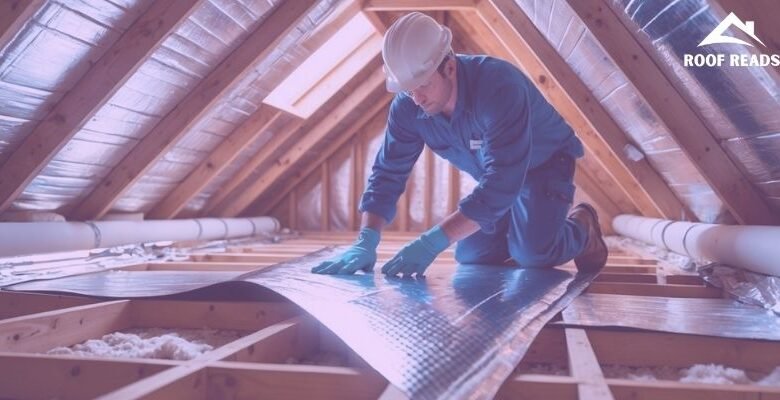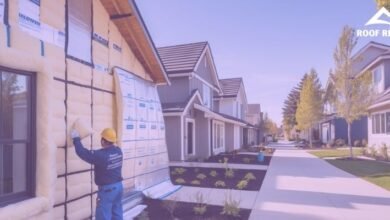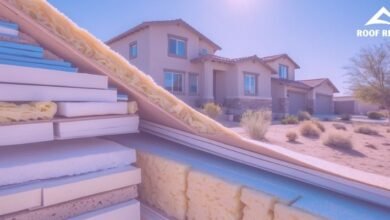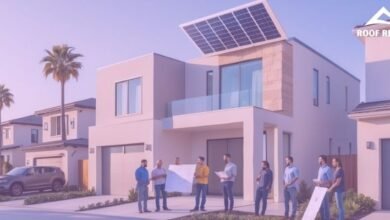Radiant Barrier Insulation for Chatsworth Homes

Radiant barrier insulation is a special type of material designed to reflect heat away from a home. It helps reduce the amount of heat that enters through the roof, making the inside cooler and more comfortable. For homes in Chatsworth, radiant barrier insulation can lower cooling costs and improve energy efficiency, especially during hot summer months.
This type of insulation works best when installed with an air space facing the reflective surface. It helps keep attics cooler by reducing heat buildup, which means less work for air conditioners. Dust and dirt can reduce the effectiveness of radiant barriers, so proper installation and maintenance are important.
Because Chatsworth experiences warm weather, radiant barriers offer valuable benefits for homeowners looking to control indoor temperatures and save on energy bills. It is a practical choice to improve comfort without drastic home changes.
Understanding Radiant Barrier Insulation

Radiant barrier insulation works by reflecting heat rather than absorbing it. Its design and materials focus on stopping radiant heat transfer, which is a major cause of increased cooling costs in homes. Knowing how it functions, what materials it uses, and the types available helps homeowners pick the right solution for energy efficiency.
How Radiant Barriers Work
Radiant barriers reduce heat transfer by reflecting radiant energy away from living spaces. When sunlight heats the roof, roofing materials absorb this heat and radiate it down into the attic. The radiant barrier’s highly reflective surface blocks much of this heat, keeping the attic cooler.
It works best when installed with an air space next to the reflective surface, as this space helps prevent heat conduction. Radiant barriers don’t have a high R-value because they don’t stop conductive heat well. Instead, they lower emissivity, which means they emit less radiant heat energy.
By reflecting heat, radiant barriers can reduce cooling costs by 5% to 10% in hot climates. This makes them especially useful in places like Chatsworth where summer heat is intense.
Materials Used in Radiant Barrier Insulation
Radiant barrier insulation typically uses aluminum foil or other reflective materials as the main heat-blocking surface. This material is very shiny and reflects radiant heat effectively.
The foil is usually attached to a substrate, or backing layer, which can be made from different thermal insulation materials such as:
- Kraft paper
- Plastic films
- Fiber-reinforced cardboard
- Oriented strand board
These substrates add durability and support but do not reflect heat themselves. The key factor is the reflective surface, which must face an air space to work properly.
Some radiant barriers include multiple layers or combine with other insulation types to improve overall thermal performance.
Types of Radiant Barrier Products
There are several common types of radiant barrier products used in homes:
| Type | Description | Common Use |
|---|---|---|
| Radiant Barrier Foil | Thin, highly reflective aluminum foil | Roofs and attics |
| Reflective Insulation | Foil laminated to foam or bubble wrap | Attic floors, walls |
| Reflective Insulation Systems | Multi-layer systems combining foil and insulation | Whole-house applications |
Each type fits a specific use or installation area. Radiant barrier foil is the most common for roofs because it directly blocks radiant heat from roofing materials. Reflective insulation often serves as a thermal layer in walls or floors.
Choosing the right product depends on home structure, climate, and budget. Proper installation with the correct air gap enhances its heat-blocking ability.
Why Chatsworth Homes Benefit from Radiant Barrier Insulation

Chatsworth homes face hot summer temperatures that raise attic heat levels and increase cooling costs. Installing radiant barrier insulation helps control how heat moves through the roof and attic, reducing energy use and enhancing indoor comfort. Proper installation and maintenance also extend the benefits over time.
Reducing Cooling Costs and Improving Energy Efficiency
Radiant barrier insulation reflects radiant heat from the sun, preventing it from entering the attic. In Chatsworth’s hot climate, this effect lowers attic temperatures by up to 30°F. Cooler attics reduce the heat transferred to living spaces below.
Reducing attic heat means air conditioning systems do not need to work as hard. This can lower cooling costs significantly and improve overall energy efficiency. Additionally, radiant barriers work alongside traditional attic insulation to reduce conductive and convective heat transfer.
By decreasing energy consumption, radiant barriers contribute to smaller HVAC workloads and longer equipment life. They are a targeted solution for reducing summer heat gain and improving the home’s thermal performance.
Enhancing Comfort and Indoor Climate
Radiant barriers help keep indoor temperatures more stable by limiting heat entering through the roof and attic. This leads to better comfort throughout the hottest months, reducing temperature swings inside the home.
Lower attic temperatures also reduce heat on air ducts running through the attic, which improves cooling efficiency. Because radiant barriers reduce radiant heat transfer, they help maintain a more even climate, decreasing hot spots near ceilings.
Besides cooling benefits, radiant barriers contribute to moisture management by promoting proper attic ventilation. This helps avoid moisture buildup that can harm insulation and overall indoor air quality, supporting a healthier home environment.
Installation Considerations for Chatsworth Climate
Effective installation is critical for radiant barriers to work well in Chatsworth’s environment. The barrier must face an air gap in the attic, typically installed below the roof decking or on attic floor joists.
A professional or certified installer following manufacturer’s instructions ensures the radiant barrier is continuous, with no gaps or tears. Proper installation also considers attic ventilation to manage moisture and avoid condensation buildup on the barrier surface.
DIY installation is possible but risks improper placement or damage. Chatsworth homeowners should weigh installation costs against long-term energy savings and comfort improvements to determine the best approach.
Long-Term Value and Maintenance
Radiant barriers offer long-term value by reducing cooling loads and improving comfort over many years. They do not rely on a high R-value like traditional insulation since they mainly block thermal radiation instead of conduction.
Maintenance is generally low. Regular attic inspections for dust accumulation or tears ensure the barrier remains effective. Dust buildup can reduce reflectivity, so cleaning may be needed periodically.
Radiant barriers resist moisture when combined with proper attic ventilation, helping prevent mold or degradation. This durability makes them a smart investment, complementing other insulation types like spray foam or fiberglass.
- Barrier Wall Insulation
- 9725 Owensmouth Ave, Chatsworth, CA 91311, United States
- +18188730701
- https://barrierwallinsulation.com/
Frequently Asked Questions
Radiant barriers work differently than traditional insulation by reflecting heat instead of slowing it down. Their effectiveness depends on factors like placement, climate, and the presence of air space. Installation details and long-term performance are important to consider before choosing this option.
How does radiant barrier insulation compare to traditional insulation?
Radiant barriers reflect heat radiation, while traditional insulation resists heat flow through materials like fiberglass or foam. Radiant barriers reduce heat gain in summer by reflecting the sun’s rays.
Traditional insulation helps keep heat inside during winter and blocks heat from moving through walls and ceilings. Both types work best together for year-round comfort.
What are the key benefits and drawbacks of installing a radiant barrier in an attic?
Benefits include lower attic temperatures, reduced cooling costs, and improved comfort in warm months. Radiant barriers reflect up to 97% of radiant heat.
Drawbacks include limited effect in cold climates and no insulation value on their own. They must face an air space to work properly, which may complicate installation.
Is radiant barrier technology a cost-effective insulation option?
Radiant barriers can reduce cooling bills, especially in hot climates. They are usually affordable compared to other upgrades and offer good value when installed correctly.
However, savings depend on the home’s design, local climate, and if traditional insulation is already in place. Poor installation can reduce cost benefits.
Are there specific seasons or climates where radiant barriers are more effective?
Radiant barriers are more effective in hot and sunny climates where cooling is a priority. They reduce heat buildup during summer by reflecting sunlight away.
In colder seasons, they add little value and should be combined with traditional insulation to prevent heat loss during winter.
What are common installation challenges associated with radiant barriers?
Radiant barriers need to face an air space and not touch insulation or roofing materials. Improper spacing or placement reduces effectiveness.
DIY installation can be tricky, requiring care to avoid tears or gaps. Professional installation ensures proper setup but costs more.
How long can homeowners expect radiant barriers to perform effectively?
Radiant barriers typically last many years if not damaged or covered with dust. Reflective surfaces must stay clean to maintain performance.
Some materials may degrade over time, but reflective foils installed in attics tend to last 10 to 20 years or more when protected from moisture and damage.




